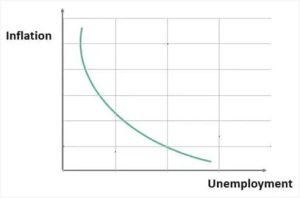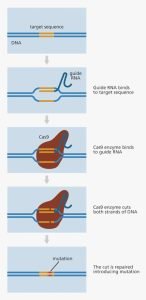Ruralisation in India
Why in News?
There have been some claims that rise in urban unemployment is forcing a structural shift towards “ruralisation” in India.
The rising market share of large corporates and sluggish private capex have resulted in a rise in urban unemployment forcing a structural shift towards “ruralisation”.
Data suggests India’s Ruralisation
- India has experienced longest phase of private capex drag in the post-independence era since 2011 despite multiple attempts to crowd them in through government investments and a surfeit of supply side and the post pandemic bounties.
| Capital expenditures (CapEx) are funds used by a company to acquire, upgrade, and maintain physical assets such as property, plants, buildings, technology, or equipment.
Crowding-in is a phenomenon that occurs when higher government spending leads to an increase in economic growth and therefore encourages firms to invest due to the presence of more profitable investment opportunities. |
- The share of public capital formation has risen to 9.5 per cent of GDP in FY22 from 6.5 per cent in FY19 whereas the share of private fixed capital formation has continued to decline (Economic Survey 2022-23); estimated at 8.4 per cent in FY22E vs 10.8 per cent in FY19.
- The persistent lack of investments has hit job creation and incomes.
| Capital formation is the net capital accumulation during an accounting period for a particular country. The term refers to additions of capital goods, such as equipment, tools, transportation assets, and electricity.Generally, the higher the capital formation of an economy, the faster an economy can grow its aggregate income. |
- India’s workforce dependence on agriculture has risen from 42.5 per cent (2018-19) to 45.5 per cent in 2021-22 (PLFS).
- As per CMIE data, at the post-pandemic peak, the agriculture sector absorbed 10 million net additional workforces since the Covid shock, while the industrial sector and services have retrenched 5.6 million and 2.5 million respectively.
- India’s industrial growth fell to a 10-year average of 2.1 per cent, compared to 7.7 per cent during 2000-12.
- We are battling with unemployment and inflation.
Phillips curve
|
Three Parent baby
Recently, a baby was born using three persons’ DNA in the UK.
About DNA:
|
Mitochondrial Disease
- Mitochondria are membrane-bound cell organelles (mitochondrion, singular) that generate most of the chemical energy needed to power the cell’s biochemical reactions.Chemical energy produced by the mitochondria is stored in a small molecule called adenosine triphosphate (ATP).
- Certain defects might occur impacting on the way the mitochondria produces energy for the cellsand thereby impacting cell function. When the mitochondria are impaired and do not produce sufficient energy, that affects how the organs function, leading to a broad assortment of symptoms across the body, including brain damage, organ failure and muscle wastage. The diseases that arise out of such mitochondrial mutations are called mitochondrial diseases.
- Mitochondrial diseases are only passed on by the mother.
How a 3 parent baby is produced?
Through an advanced In Vitro Fertilisation technique the baby’s biological father’s sperm was used to fertilise the eggs from the biological mother, who has a mitochondrial disease, and a third, female donor with clear mitochondria, separately.

Then, the nuclear genetic material from the donor’s egg is removed and replaced with the genetic material from the biological parents’. The final product – the egg – which has the genetic material (DNA) from the parents, and the mitochondria from the female donor, is implanted in the uterus, and carried to full term to yield a baby who will be free from the mother’s mitochondrial disease. This process is termed Mitochondrial Donation Treatment (MDT).
| In vitro fertilization (IVF):
· In vitro fertilization (IVF) is the joining of a woman’s egg and a man’s sperm in a laboratory dish. In vitro means outside the body. Fertilization means the sperm has attached to and entered the egg. · Normally, an egg and sperm are fertilized inside a woman’s body. If the fertilized egg attaches to the lining of the womb and continues to grow, a baby is born about 9 months later. This process is called natural or unassisted conception. · IVF is a form of assisted reproductive technology (ART). This means special medical techniques are used to help a woman become pregnant. |
Ethics of Designer Baby
Genetic engineering involves the direct manipulation of an organism’s genes using biotechnology. In the case of human genetic engineering, this can involve editing the DNA of embryos, sperm, or eggs to introduce or remove specific genes. Several gene-editing techniques have been developed over the years, with the advent of CRISPR-Cas9, a revolutionary gene-editing tool, significantly changing the landscape of genetic engineering.
Two types of editing
- Somatic Editing
- Germline Editing
Germline editing is particularly controversial as the changes made to the genetic material can be passed down to future generations, potentially affecting the human gene pool.
| What is CRISPR-Cas9?
· CRISPR-Cas9 is a unique technology that enables geneticists and medical researchers to edit parts of the genome by removing, adding or altering sections of the DNA sequence. Ø Genome: An organism’s complete set of genetic instructions. Each genome contains all of the information needed to build that organism and allow it to grow and develop. Ø DNA: A long molecule that contains our unique genetic code. It holds the instructions for making all the proteins in our bodies. · It is currently the simplest, most versatile and precise method of genetic manipulation and is therefore causing a buzz in the science world.
How does it work? · The CRISPR-Cas9 system consists of two key molecules that introduce a change (mutation) into the DNA. These are: Ø An enzymecalled Cas9. This acts as a pair of ‘molecular scissors’ that can cut the two strands of DNA at a specific location in the genome so that bits of DNA can then be added or removed. o An enzyme is a biological molecules, usually proteins that are responsible for thousands of metabolic processes essential to life. Ø A piece of RNAcalled guide RNA (gRNA). This consists of a small piece of pre-designed RNA sequence (about 20 bases long) located within a longer RNA scaffold. The scaffold part binds to DNA and the pre-designed sequence ‘guides’ Cas9 to the right part of the genome. This makes sure that the Cas9 enzyme cuts at the right point in the genome. o RNA is a nucleic acid similar in structure and properties to DNA, but it only has a single strand of bases and instead of the base thymine (T), RNA has a base called uracil (U). · The guide RNA is designed to find and bind to a specific sequence in the DNA. The guide RNA has RNA bases that are complementary to those of the target DNA sequence in the genome. This means that, at least in theory, the guide RNA will only bind to the target sequence and no other regions of the genome. · The Cas9 follows the guide RNA to the same location in the DNA sequence and makes a cut across both strands of the DNA. · At this stage the cell recognises that the DNA is damaged and tries to repair it. · Scientists can use the DNA repair machinery to introduce changes to one or more genes? in the genome of a cell of interest.
|
Potential benefits
Proponents of human genetic engineering argue that the technology has the potential to eliminate or reduce the risk of many genetic diseases.
This could lead to healthier individuals and reduce the burden on healthcare systems.
Additionally, genetic engineering could be used to select for traits that may be beneficial, such as increased intelligence or athletic ability, potentially leading to a more capable and productive society.
| Eugenics is the scientifically erroneous and immoral theory of “racial improvement” and “planned breeding,” which gained popularity during the early 20th century. Eugenicists worldwide believed that they could perfect human beings and eliminate so-called social ills through genetics and heredity. |
Ethical Concerns
- Informed consent:
- Social Inequality:
- Economic Inequality:
- It will promote Eugenics
- What will happen to disabled people?
- Long term effects of gene editing



